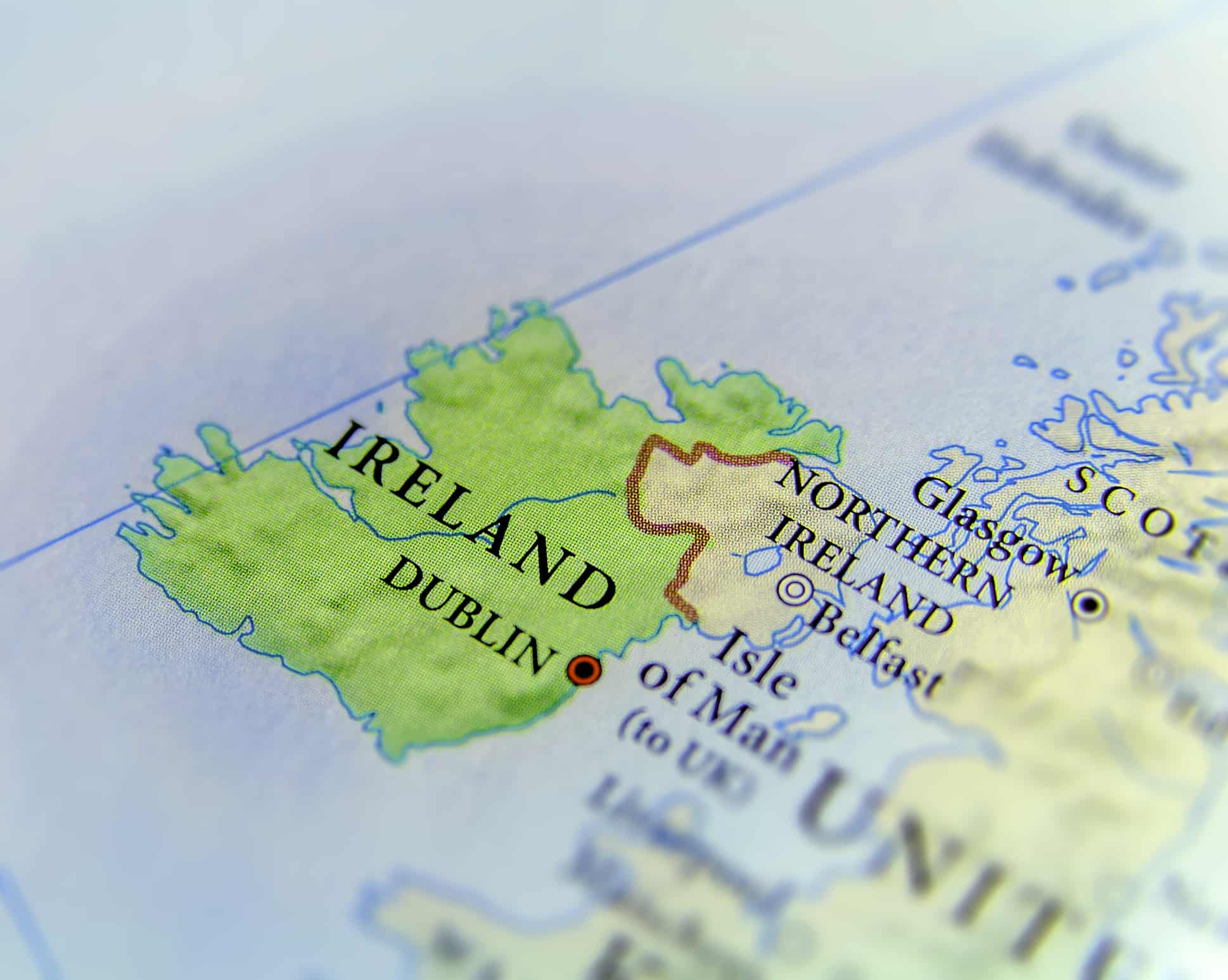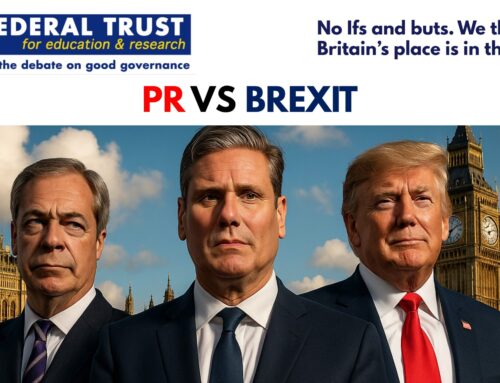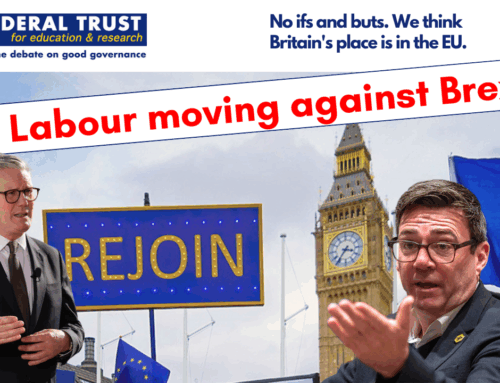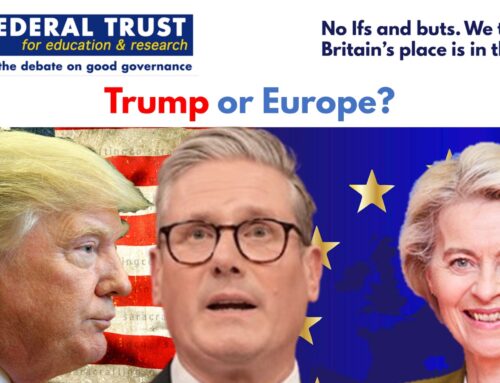In May 2021 Northern Ireland will mark the hundredth year of its existence. These years have been marked by long periods of turmoil rather than any sense of contentment or stability. There has been and remains an atmosphere of unease. Governments in Northern Ireland have been marked by periods of social and religious discrimination, been suspended by Westminster, run sometimes by a power sharing Executive, managed under direct rule from London and now once again, have been struggling to maintain easy relationships between all the five political parties who share power under the special Belfast Agreement arrangements that enable them to do so. The hundred years have been marked by an absence of enduring political stability .
Meanwhile in the Republic, great change has come about. From the deeply reactionary Presidency of Eamonn de Valera and the all-powerful Catholic Church in the undeveloped agrarian society of the 1920s, has evolved a modern European Member State, standing with confidence in the modern world and playing its part as an equal in the membership of all the big international organisations. Membership of the EU has given Ireland the confidence it required to emerge from under the wings of big brother Britain in the 1970s and take its place in western society while retaining closeness of bi-lateral partnership with the United Kingdom in international affairs unprecedented in its history until the recent past.
Brexit has now broken that link, and Britain standing alone, outside the EU, has created new and complicated circumstances on the island of Ireland.
The Irish Diaspora
In the Irish diaspora, the creation of wave after wave of emigration, from the starving years of the famine, through the two World Wars to the glory days of economic liberation in the European Union, Ireland’s people have moved widely across the globe. In every continent, east and west. In islands across the oceans. It is now difficult to find a country anywhere where the Irish Pub is not easy to find. With this international dispersal has come a deepening of sentiment for HOME. And as the old Irish songs pluck at the heartstrings of those who have gone away, sometimes for ever, so the joys of the romantic memories fall easily into rhythm with the joyful thoughts of a ‘United Ireland’.
In the island of Ireland, north as well as south, until relatively recently a United Ireland was never very closely defined. It was supposed to mean the unity of the island, under one government in Dublin, a sovereign state with its own President but close relations with other EU Member States and a particularly close link with Great Britain including a common travel area. Whereas many people in the south were fairly relaxed about such a description, which avoided much important detail upon which there was little discussion and even less attention to cost, in the north the situation was and remains different.
All loyalists were adamant about their fealty to the Queen. They were joined by most Unionists who preferred the union with Great Britain to an ill-defined relationship with a republic whose interest in the north’s economic, social and constitutional circumstances was never believed to be very serious. Northern Nationalists were in the main well disposed to unification at some undefined future point but believed that major challenges lay in the way. Social provision, health service, infrastructure and economic barriers were some of them. A small but growing political influence represented by the Alliance Party and a few middleclass professional Official Unionists were not against closer north-south relations and were quite happy to see a move to a closer relationship provided a realistic analysis was made of the practical possibilities. Some form of representation in the Dáil was accepted. And in the Senate. But a relationship with Westminster seemed essential too.
Only Sinn Féin, the political wing of the Provisional IRA was foursquare in favour of a United Ireland and had waged a 30-year campaign of violence and bloodshed to establish its credentials. In doing so it had emulated many former British colonies whose independence had grown out of the barrel of a gun.
The Belfast (Good Friday) Agreement
The Belfast (Good Friday) Agreement of 1998 changed all that. Arms were gradually ‘put beyond use’, the violence abated on both sides and talks replaced bombing and shooting as the agreed means of moving forward. Nevertheless, splinter groups remained active and still do. The DUP under Ian Paisley did not immediately go along with all the eventual conclusions but the governments of the United Kingdom and Ireland stayed the course as equals, thus providing the confidence needed to make unprecedented advances.
Once signed by the two governments, the EU and the USA became strong supporters of the Agreement and it was ratified as an international Treaty by the United Nations and the European Union. A Peace Process followed, providing funds from the EU, the US, the British and the Irish, as well as charitable donations to support projects on both sides of the Border and in areas of social turbulence.
There were three strands to the Agreement. A specially balanced power-sharing Executive in Northern Ireland responsible to an elected Assembly; a North/South Ministerial Council involving government Ministers from Ireland and Northern Ireland; and a British / Irish Council comprising Ministers from Scotland, Ireland, Northern Ireland, Wales, London, Isle of Man and the Channel Islands.
The short history of the Northern Ireland Executive has been an uneven trail of fits and starts. Trust between the members seems to be in short supply. Their public exchanges resemble the calls to arms of their grass roots membership rather than a genuine attempt to forge a working consensus across a negotiating table. Strands two and three of the Agreement have also struggled to convince the international observers that the construct is either widely welcomed or sincerely intended.
The Belfast (Good Friday) Agreement was in its origin a finely balanced agreement backed by a political will to move down the path determined by the participants, and underpinned by a joint political commitment provided by the two governments of Britain and Ireland acting together. That joint commitment was reinforced by a history of nearly 40 years of close harmony and friendly cooperation by Britain and Ireland, backed by the enthusiastic political, financial and peace-seeking support of 26 other European Union Member States and the Americans.
In the years after the great financial crisis in 2008, internal politics in both Britain and Ireland came under new strain. In the Republic, support for Sinn Féin began to reach new heights and with it a greater emphasis on the question of unity, felt to be a refreshing relief from the uninspiring sameness of the two mainstream parties. Sinn Féin gave the added excitement of a young all Ireland future nation already embedded in the polity of both parts of Ireland. It appealed particularly to the young, looking for a greater sense of freedom away from the old social conservatism of the past and out of date Church-based hypocrisy of the present. The two main political entities, Fine Gael and Fianna Fáil eschewed any real possibility of coalition with Sinn Féin, whose policy on the north was hard-line and fundamentalist. Sinn Féin stood for Irish Unity. Now and for ever.
A Shared Island
The other parties tried new ways of avoiding potential violence while acknowledging different approaches. One, advanced by the new coalition in 2019, called for a ‘Shared Island’. This readily acknowledged the need for understanding of the unionist ethic but also believed that a more friendly relationship might be developed. A special unit in the office of the Taoiseach was created for this purpose. So far response from the unionist north has been silence. The Shared Island idea was new territory for political parties in the south. By heavy implication, it was a recognition that more than one tradition now had to be given due recognition. Any ideal of the traditional island of ‘The Four Green Fields’ was recognised as a futile ambition. Unionism needed formal recognition in any scenario about a peaceful future, but the format it might eventually take was always being set aside.
The background on the mainland was unpropitious. Nationalism in England and calls for an independent Scotland were strengthening anti-European voices calling for a referendum on future membership, fuelled by deep-seated antagonism towards the European currency, and apportioning much blame for increased immigration on membership of the EU. To the surprise of many, Prime Minister Cameron called a referendum in an effort to neutralise the forces of his right wing. The referendum was lost by a slim majority and Brexit was born. Northern Ireland voted 56% in favour of remaining in the EU but alone among the parties the DUP was strongly against. The traditional bond between right wing conservatives and the DUP was refreshed. Cameron resigned and the DUP formed an alliance with the Conservatives to provide them with an anti-EU voting majority in the House of Commons. It lasted through the term of Theresa May and provided strong support for Boris Johnson whose rallying cry was encapsulated in the slogans “Take Back Control” and “Get Brexit Done”.
The Brexit Crisis
On the island of Ireland this created an unexpected crisis. The British Government insisting on the hardest of Brexits thus created an international boundary between Ireland, a continuing member state of the EU; and the north, part of a third country. The position was untenable. An Irish Protocol was negotiated between Britain and the EU Member States providing unique arrangements whereby Northern Ireland would remain in the European Single Market and Customs Union, the land border would remain unmanned, but in order to satisfy the needs of the Single Market, procedures would become established in the Irish Sea – or more accurately in the ports of the north. Delays in implementing the necessary measures created tension and the British government unilaterally extended an agreed completion date to relieve the mounting political pressure. In doing so, it squandered even more trust in Europe as well as in Ireland.
Sinn Féin took advantage of the 56% vote in favour of “remain” in the north, to call for an immediate Border Poll, citing the supposition that pro-Remain Unionists might wish to vote to remain in the EU and therefore create a new relationship with Ireland in order to do so.
These unintended consequences precipitated an unprecedented crisis based on Brexit and with Britain the architect of the consequences.
The result so far as been the dramatic increase in calls for Irish Unity led by Sinn Féin, the only all-island and all-Ireland political Party in existence. These calls have been matched by hard-line loyalists rising up against what they and an increasing number of Unionists regard as an existential threat to which they are fundamentally opposed.
Is a United Ireland only a Slogan?
In truth, United Ireland is a slogan. Look beneath its surface and there are as many interpretations as there are participants in the emerging debate. There is no consensus on what it means or what form it might take. There is now however an acceptance of the principle of consent, that violence has no part in any solution and that coercion is anathema. There is no sign whatever that the majority of unionists are even prepared to discuss a united Ireland, undefined, or one that would remove their emotional and cultural feelings of attachment to their sense of Britishness. As David Trimble, the Nobel Laureate said to an SDLP colleague when asked what he wanted for Unionism. – “To be left alone”. It might be difficult to be left alone while occupying a space in which the other half wishes to see change, but Trimble’s sentiment is a measure of the chasm which exists between the philosophy of wishing to be left alone as a minority on an island and the myriad different combinations of possible dialogue. There is no meeting of minds. There is no agenda. Relations are seldom friendly. Too many Unionists regard the south as a Foreign Country. To many of the older generation near the border it remains “The Free State”.
Yet new attitudes are beginning to appear in the south. John Bruton, a former Fine Gael Taoiseach recently confronted some comfortable assumptions, accepted uncritically until he spoke. He said “The history of Northern Ireland since 1920 demonstrates the danger of attempting to impose, by a simple majority, a constitutional settlement and an identity, on a minority who feel they have been overruled.”
As the SDLP leader Seamus Mallon said, “If border polls are to take place north and south, concurrently, a fait accompli will be created overnight. That is a recipe for trouble”
In 1993 in the Downing Street Declaration agreed between John Major and Albert Reynolds, it states that “Irish Unity should be achieved by those who favour it persuading those who do not, peacefully and without coercion or violence”.
These and many more questions have yet to be asked and answered.
More unanswered questions
What would happen if a border referendum was to be held and carried, but by only a slim majority, leaving a substantial minority deeply unhappy? Would the two governments be prepared to move ahead on that basis? What would the Europeans and the Americans think? And what would the loyalists in the north and the many unionists who sympathise with them be prepared to do? What would happen if invitations to talks were turned down, as would be very likely?
What would be the responsibility of the Belfast Agreement participants and Treaty supporters in such circumstances?
Already there are a growing number of hard-line Unionists and Conservatives who do not like the Belfast Agreement. The British/Irish Council is not acting as effectively as arrangements did between the two governments under Tony Blair and Bertie Ahern. The North/South Ministerial Council has been very low key when it has a role to spearhead better cooperation between north and south. And the Executive struggles to govern effectively.
It may be too early to judge the effect of membership of the Single Market and Customs Union on business patterns in the north. Or the effects if they turn out to be negative, on east-west trade between Britain (outside) and both parts of Ireland (inside) the Single Market. The prospects for ‘Global Britain’ on levels of prosperity within the United Kingdom, now out of the EU, are also difficult to predict.
If Ireland continues to prosper within the EU and the north begins to reap the rewards of membership of the Single market as is predicted, could the changes in trade patterns and associated prosperity possibly have an effect on attitudes in the north if Britain fails to achieve its hopes as ‘Global Britain’ ?
It is to be hoped that the Irish protocol problems can be resolved to general satisfaction. If so, many questions will still require convincing answers: financial responsibilities, social, health and welfare benefits, taxation and many others before any discussion can even begin, about a United Ireland.
As a starting point NOW, all political parties, north and south, should declare themselves against coercion, against violence and against the outdated slogans that still accompany them. This would constitute a first practical step forward towards a discussion aimed at resolving real issues and bridging the yawning gap which continues to exist between hope and reality in a culturally divided island.
Until then, a United Ireland will remain for many, the dream of a lifetime. For others a ghastly nightmare.






Excellent and very informative Geoff! Antonio
The Irish conflict is yet another result of the disastrous policy of partition inflicted on people around the world during the decline of the British Empire by Lloyd George, Churchill and others. Ulster had a thriving economy in textile and ship production until a hundred years ago – both now relegated to museums.Since then it has been forced to adopt a dependency culture, rather like a British colony, with a significant part of the population living on benefits. Scotland is in a similar position. If anything changes it will be for economic reasons because England will find it increasingly difficult to maintain the dependency culture as tax revenues decline from the loss of business to mainland Europe after it inflicted partition on itself, showing how asinine the British administration still is..
A very helpful historical analysis of an incredibly complex situation.
So the question for me is what needs to happen next to help parties adopt the ‘hearts and minds’ approach needed to take this dire predicament forward in a constructive way?
Excellent definition of the problem as an Irishman abroad it explains my feelings perfectly. But I can still dream of the flag over Stormont to be green white and gold.
Very enlightening run-down of the issues.